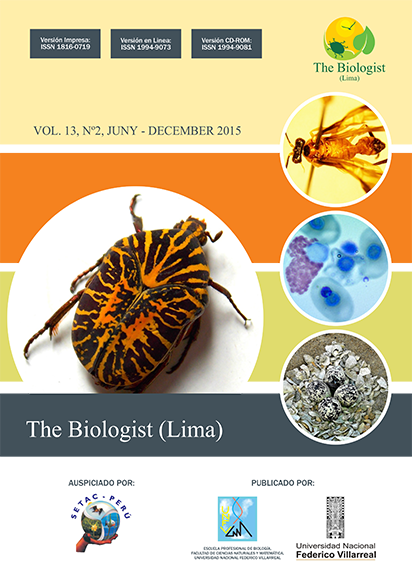BLACK-WATER FORESTS (IGAPÓ) VS. WHITE-WATER FORESTS (VÁRZEA) IN THE AMAZON: FLORISTICS AND PHYSICAL STRUCTURE
DOI:
https://doi.org/10.24039/rtb20151321562Keywords:
Ecuador, LTER, Peru, Tamshiyacu-Tahuayo, Tipitini, YasuniAbstract
Flooded forests occur across the landscape of the Amazon basin and, because they are important to our shared human density, need further investigation. Here I use replicated plots to examine the floristics and physical structure of the two most common kinds of flooded forest-types in the Amazon. I set up four 50 m x 50 m forest plots in black-water forest (igapó) in Peru and also in white-water forest (várzea) in Ecuador. I then sampled all trees in all plots at least 10 cm dbh for species, and then generated a variety of floristic and physical parameters. There was species variation among the plots within both forest-types, but little variation in physical structure. The four igapó plots taken together (now 1 ha) had 16 families, 29 genera and 31 species with Fabaceae, the most common family of which also had the most genera and the most species. The four várzea plots taken together (now 1 ha) had 42 families, 91 genera and 159 species, with Fabaceae again the most common family which also had the most genera and the most species. There were only four species in common. In general the várzea plots had more stems, and more large stems (at least 40 cm dbh) than the igapó plots, but mean stem size was very similar. Structural comparison to terra firme 1 ha plots showed it had more stems, thicker stems and more above-ground biomass compared to either of these pooled 1 ha flooded plots. Finally all study plots conformed to the reverse J stem size distribution pattern for all stems.
Downloads
Downloads
Published
How to Cite
Issue
Section
License

This work is licensed under a Creative Commons Attribution-NonCommercial-NoDerivatives 4.0 International License.
Objeto: El AUTOR-CEDENTE transfiere de manera TOTAL Y SIN LIMITACIÓN alguna al CESIONARIO (Revista The Biologist (Lima)) los derechos patrimoniales que le corresponden sobre sus obras por el tiempo que establezca la ley internacional. En virtud de lo anterior, se entiende que el CESIONARIO adquiere el derecho de reproducción en todas sus modalidades, incluso para inclusión audiovisual; el derecho de transformación o adaptación, comunicación pública, traducción, distribución y, en general, cualquier tipo de explotación que de las obras se pueda realizar por cualquier medio conocido o por conocer en el territorio nacional o internacional.
Remuneración: La cesión de los derechos patrimoniales de autor que mediante este contrato se hace será a título gratuito.
Condiciones y legitimidad de los derechos: El AUTOR-CEDENTE garantiza que es propietario integral de los derechos de explotación de la(s) obra(s) y en consecuencia garantiza que puede contratar y transferir los derechos aquí cedidos sin ningún tipo de limitación por no tener ningún tipo de gravamen, limitación o disposición. En todo caso, responderá por cualquier reclamo que en materia de derecho de autor se pueda presentar, exonerando de cualquier responsabilidad al CESIONARIO.
Licencia de acceso abierto: El AUTOR-CEDENTE autoriza que manuscrito publicado en la Revista Científica The Biologist (Lima) (versión Impresa ISSN 1816-0719, versión en línea ISSN 1994-9073) permanece disponible para su consulta pública en el sitio web http://revistas.unfv.edu.pe/index.php/rtb/index y en los diferentes sistemas de indexación y bases de datos en las que la revista tiene visibilidad, bajo la licencia Creative Commons, en la modalidad Reconocimiento-No comercial- Sin Trabajos derivados –aprobada en Perú, y por lo tanto son de acceso abierto. De ahí que los autores dan, sin derecho a retribución económica, a la Escuela Profesional de Biología, Facultad de Ciencias Naturales y Matemática de la Universidad Nacional Federico Villarreal (EPB - FCCNM - UNFV), los derechos de autor para la edición y reproducción a través de diferentes medios de difusión.









































